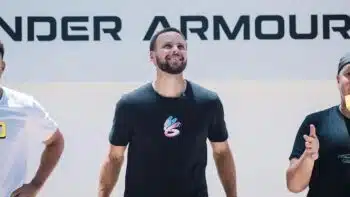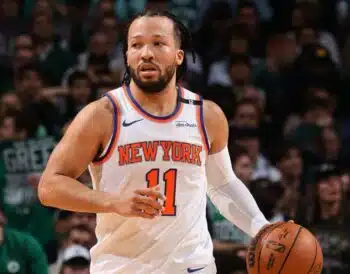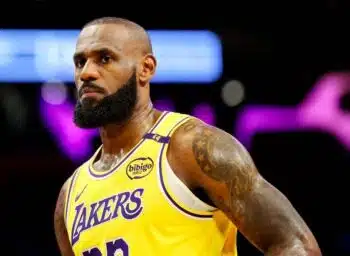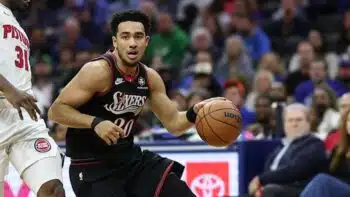NBA
NBA Draft 2025: Why the Spurs Should Draft and Keep Dylan Harper
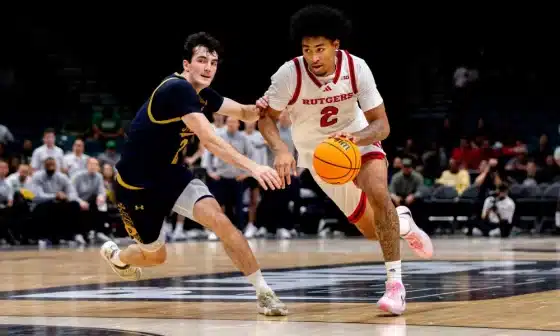
The basketball gods continue to favor the San Antonio Spurs, as they beat the odds to land the second pick in the 2025 NBA Draft. While the lottery results were a blessing for the Spurs, their decision with the pick won’t be as simple as it would be for other teams.
For most teams, there wouldn’t be a decision to make at two. They’d draft Rutgers freshman guard Dylan Harper, who’s a high-end prospect in his own right after Cooper Flagg. He’s a dominant slasher with plenty of upside in the other areas of his game, with All-NBA level upside.
Harper carried an enormous offensive load for a talent-deficient Rutgers squad, notching a 28.8% usage rate while scoring efficiently (58.6%). His usage rate ranked third among high-major freshmen this season and would place him in the 96th percentile among NBA players this year.
Most teams picking atop the draft would have no problem absorbing this usage. The Spurs, however, have Victor Wembanyama, De’Aaron Fox and promising rookie Stephon Castle soaking up possessions. If the Spurs drafted Harper, they’d have to shift his role dramatically, at least early in his career.
He didn’t benefit from many easy, manufactured buckets in college. A staggering 82.4% of Harper’s makes at the basket (where he made an incredible 70% of those shots) were unassisted at Rutgers. An even greater 88% of his non-rim 2-pointers were unassisted as well. The bulk of Harper’s unassisted makes came from beyond the arc (48% unassisted rate on 3-point makes), forming the basis of his possible early NBA role.
Harper has the tools to play off ball
Harper attempted 57 catch-and-shoot triples at Rutgers, converting a solid 36.8% of them. If we extend the sample across his high school and AAU career (according to Synergy, dating back to his 2022 16u EYBL season), Harper sits at 38.6% (68/176) on catch-and-shoot threes. That’s an inspiring track record, helping compensate for average volume in college.
Without a lightning-quick or high release, Harper relies on his range to find openings. He’s comfortable firing from well beyond the college line, which bodes well for his NBA translation. In San Antonio, Harper would likely see plenty of open spot-up threes off of Wembanyama, Fox and Castle’s on-ball gravity.
Throughout his high school, AAU and college, Harper hasn’t played with many NBA-caliber players. Ace Bailey is the only surefire pro Harper has played a significant amount of time with. As talented as Bailey is, his decision-making issues didn’t help extract tons of value from Harper’s off-ball chops.
despite low offball usage, dylan harper displayed the feel for spacing/timing, spot-up shooting and decisive driving requisite to play without the basketball at the NBA level
harper had to play on ball for most of his career but he will excel next to other stars at the next lvl pic.twitter.com/6NjtKPFEPe
— ben pfeifer (@bjpf_) May 14, 2025
The only notable sample for Harper playing off the ball came in FIBA play, where he played with the 2023 U19 USA team (despite being 17 years old at the time). He averaged just 9.3 points in 18.8 minutes per game across those seven games, playing next to established college basketball stars and future pros (Kylan Boswell, Asa Newell, Tre Johnson, Cody Williams, Tobe Awaka).
Without tons of on-ball usage, Harper excelled in a low-responsibility role. He cut to the basket, competed on defense and attacked the basket decisively when defenses closed out to him. It’s a tiny sample to extrapolate from, but Harper’s FIBA stint provides some evidence of his viability next to other stars.
How will he adapt in the NBA?
If the Spurs elect to draft Harper, he must tap into those complementary skills. His usage will shift dramatically from his time at Rutgers, trading pick-and-roll and isolation chances for spot-ups and cuts. At Rutgers, pick-and-rolls and isolation comprised staggering 45% of Harper’s playtypes.
Harper wouldn’t receive the same playtype usage in San Antonio. Early in his career, we’d likely see plenty of spot-ups and closeout attacks, both areas where Harper thrives. Slotting Harper into San Antonio’s ecosystem would require some tinkering but the reward would be worth the trouble.
There’s plenty of creative ways to weaponize Harper off of the ball. It’s easy to imagine him thriving as an inverted screener for Wembanyama, a handoff driver or as a baseline cutter. Harper would have no problems running San Antonio’s bench units, helping them maintain an imposing creation presence regardless of the lineup.
The Spurs could ship off the second pick to a team like Milwaukee to add another superstar next to Victor Wembanyama. Trading one of Fox or Castle would likely be best to maximize Harper. That’s a risk worth taking, as Harper’s ceiling is higher than both of the aforementioned player.
As great as Fox and Castle are, Harper’s size, special driving talent, shotmaking and passing skill present true superstar upside. The Spurs shouldn’t pass up on the chance to add Harper to their core for anything but a top-five player in the league. There will be real temptation to take a clearer path, whether that’s trading Harper or drafting a different player entirely.
San Antonio should trust Dylan Harper’s ability to adapt to his NBA situation. They’ll be greatly rewarded in the long-term if they commit to some early discomfort.
